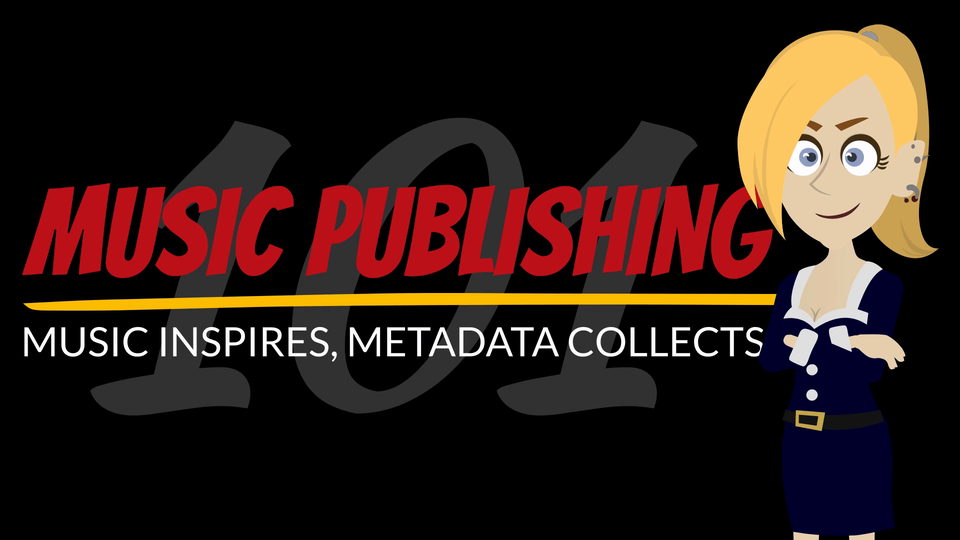Music Publishing Software
If you are interested in software for music publishers, actual solutions we offer are listed on the parent page. This article, and following ones, are about making the right choice.
Musical Work
The foundation of all rights in music publishing is the intellectual property of the musical composition and lyrics (musical work).
It is nearly impossible for an author to individually monetize these rights, especially worldwide. This is where music publishers come in.
While it is hard to give a general explanation, due to the difference between national laws, music publishers fulfill the roles of promoters, agents and rights holders.
Performance, Mechanical, Synchronization
Basically, there are three economic rights for musical compositions: performing rights, mechanical rights, and synchronization rights. The definition of these rights differs greatly between the US and the rest of the world, with some countries, most notably the UK, sitting in between, so this will be a very simplified “global” explanation, omitting all exceptions.
Performance rights give authors the right to monetize on the public performance of their works, which includes live performances, radio, television, theater and similar performances. This right is generally monetized through collective management organizations (CMOs). In the US, there are specialized ones, called performance rights organizations (PROs).
Mechanical rights royalties derive from sales of carriers of sound, e.g. records and CDs, but also ringtones and on-demand streaming. In most countries, the same society, that collects performing rights, collects also mechanical. But in many, including the US, they are strictly separated.
Synchronization rights apply when music is synchronized with some other content, most notably in commercials. But it also applies to e.g. YouTube videos using third-party music. Historically, they required direct agreements and payments, but new models have recently emerged.
It must be noted here that YouTube, Spotify and other on-demand music and video services, as well as social networks, are a huge source of revenue for music publishers, but also a huge topic not covered here.
Authors and Publishers
A writer can choose to give a percentage of their share of the musical work to a publisher, with fiduciary obligations that the publisher must care about the writer’s interests. And then there is often a percentage of income being paid as well. A publisher that has a direct agreement with a writer is called “original publisher”. There can be more than one in a work, even if there is only one writer.
If there are several writers, each can have a different original publisher or a different set of original publishers. So, there are two kinds of writers, from a publisher perspective, those related to through contracts, directly or indirectly, and others. They are quite often referred to as “controlled” and “uncontrolled”, although these terms are very misleading.
Publishers can have agreements among themselves, and the most usual are administration, sub-publishing and sometimes co-publishing (which often includes writers in the agreement). In the context of music catalogue management software, these agreement types have very different feature requirements.
Copyright and Creative
Most publishers have departments called “Copyright” and “Creative”. “Copyright” is a misnomer for “Register and Collect”, as they are dealing with collecting organizations and services like YouTube and Spotify, while “Creative” is just plain old “Sales”, dealing directly with clients.
Music Catalogue Management Software
Let’s sum it up. The main sources of ordinary revenue for music publishers are collecting societies, DSPs and direct contracts.
Registrations and Royalty Statement Processing
In order to receive money from collecting organizations and online services, musical works must be registered or claimed. With very few exceptions, each collecting organization requires a separate registration. They do not magically exchange information. That means a work must be registered in each one of them, either directly or through sub-publishers.
Common Works Registration (CWR) format that is universally used for both batch registrations and data exchange among publishers. One should not consider any software that does not do CWR.
There are several articles and videos about it in the CWR section, which is arguably the best source of practical information about this subject. Using free Django Music Publisher, maybe even taking a peek at it’s open-source code, will give you invaluable insight into CWR.
When collecting organizations and online services send royalty statements and money, most publishers take their fees and forward the rest to their clients. In order to do that, they must import and process incoming statements and create outgoing ones. A catalogue management software for music publishers is not accounting software. Avoid solutions that pretend they are. All they want is to lock you in. A good solution should provide a simple way to integrate with any accounting software.
Sync Pitches and Sales
In order to pitch music for, let’s presume, a TV commercial, either a potential client must be able to search through your works or you must be able to send them a suggestion. In either case, the restricted access to the work must be provided. In both cases, some of the CRM functionality should be included as well.
Next
In the following articles, we will deal with these topics in more detail, starting with registrations.
 We also have a 11-episode video series called Music Publishing 101, more focused on the use of catalogue management software.
We also have a 11-episode video series called Music Publishing 101, more focused on the use of catalogue management software.